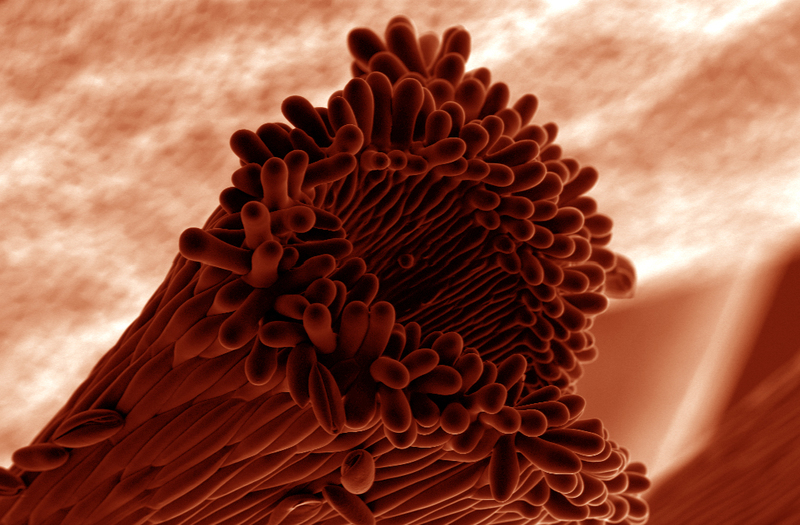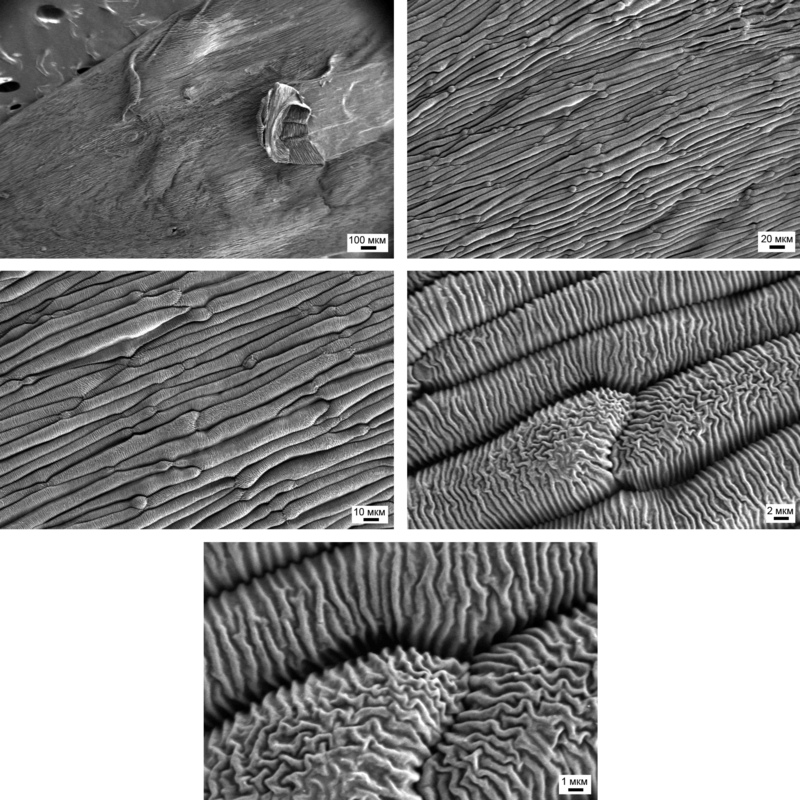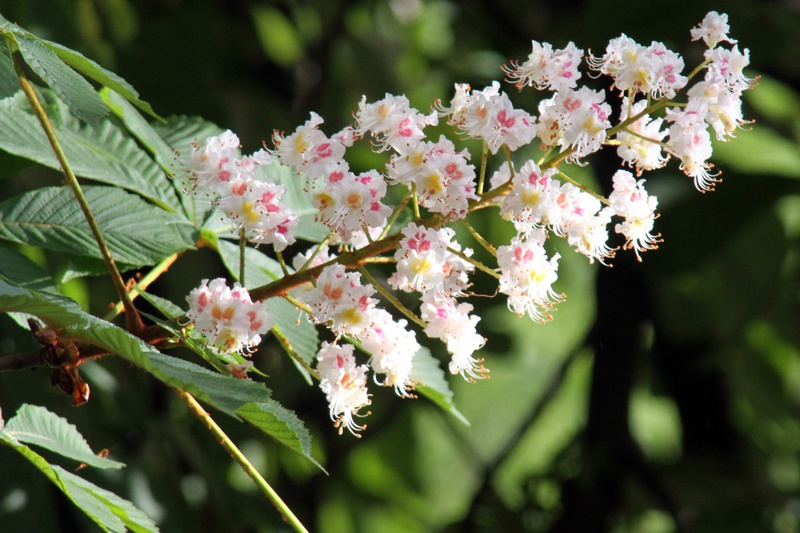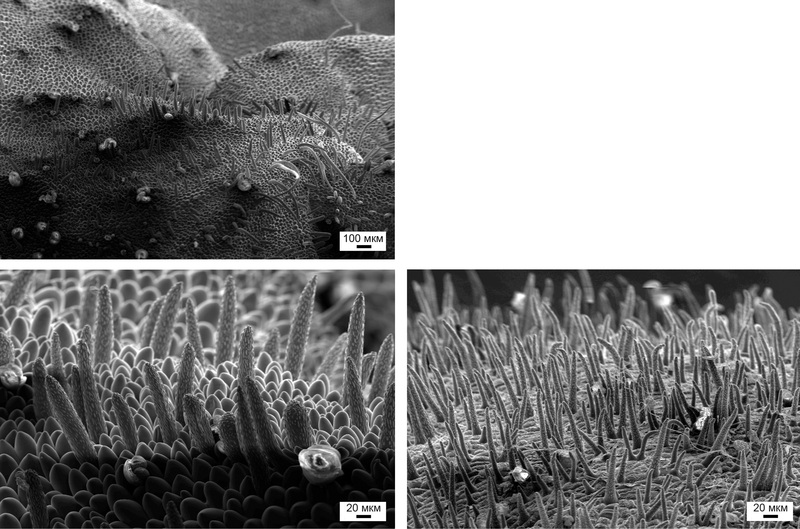Inside view: the world around us - 3

Dedicated to all who loved, helped,
believed, supported, no matter what,
and with whom I could not be near ...
All good things will ever end. I am immensely sorry that this post will be the final one in a series of fascinating - at least I hope so - journeys to the micro and sometimes even the nanoworld, which 50 years ago, without exaggeration, the great physicist Feynman said: “There is plenty of room at the bottom. " Indeed, there is much more space below than we could imagine. Below, bacteria live, plants and animals multiply, our everyday devices from a coffee maker to Watson (Watson, IBM) work, an unimaginable number of processes take place there, which are often not understood and comprehended by humans, but which define our world.
Of course, much remained beyond the scope of our consideration in this series of publications, but even the material that was presented and will be presented to the public today is more than enough to make even the most skeptical layman look around and see the versatility of the world. Without going deep into Kant’s philosophy, my maxim is this: I would like to see a large part of the Russian-speaking population able to read this post (be it Ukrainians, Russians, Baltic states or anyone else), interested and enthusiastic - in my case, science and research - and I think that I have succeeded a little in this field.
While the spring-summer season of 2012 lasted, I managed to collect a wide selection of materials about the hidden life of plants, which, in fact, I plan to share with dear readers. There will not be much text, more and more pictures - so sit back and enjoy!
Remarochka: Unless otherwise indicated, photos of plants taken from Wikipedia
Plant flowers
Dandelion

Let's start with the simplest and most mundane, it would seem, flowers that can only surround us. Many, I think, consider the dandelion ( Taraxacum ) to be nothing more than a weed, although it belongs to the family of asters, that is, by and large it is not much different from the same aster or gerbera (see Inside view: the world around us ).
The shape of the petal cells is similar to other asters, for example, the aster itself:

And even more like some kind of worm:

Spheres of pollen rolling on the surface of worms from Dune
However, the shape of the pestle is striking - it's some kind of alien: A

pistil with adhering pollen
Chamomile

Also, the representative of the astro family is chamomile ( Matricaria ) , more precisely, a decorative chamomile, but this has nothing to do with the issue under consideration. But what seemed interesting is the shape of the cells. It is strikingly different from the "classic astra", more rounded:

The surface of the petal - hemp and bumps in the swamp
But this time the flower itself was not very lucky - I still planned to see it blooming:

Non-blooming tubular daisy flowers
I'm afraid to be wrong, but, in my opinion, it was possible to capture a separate particle of pollen - what a striking difference with a dandelion, isn't it ?!

Chamomile pollen
Tulip and lily

Tulip

Lily
Strange as it sounds, but a tulip ( Tulipa ) belongs to exactly the same family as the lily ( Lilium ) , that is, lily. Therefore, these two plants really have unusually many common features.
For example, the surface of the tulip pestle:

The surface of the tulip pestle
And similar forests covering the pestle can be found near the lily:

The surface of the lily pestle is overgrown and stalactites from the ceiling.
By the way, so that there is no doubt that the pestle is an important part of the whole flower and only for the sake of reproduction, the plant lives - pay attention to how many respiratory pores are on it:

The surface of the tulip pestle: fields of respiratory pores
Unfortunately, it was not possible to obtain micrographs of tulip pollen in good quality (for comparison with lily pollen). I can only note that it really is somewhat different from the latter. But take a look at these pollen particles - do they not look like Faberge eggs, only in micro-version?

Nature is undeniably excellent jeweler and Faberge jumped over in the manufacture of eggs.
The joint of two lily petals is similar to a zip latch or a zipper on our clothes:

Zip-locker made by Nature
Orchid

Source
And here is one of the most popular decorative domestic plants that came to us from distant lands - orchid ( Orchidaceae ) . An interesting plant to study, because even the surface of the inflorescence petals has a different structure: on one side there are some cells, on the other, which is probably related to the functions performed by the cells:

The surface of the orchid petals

I don’t have anything like that, but I like this photo!
Hibiscus

Another extremely common plant with very delicate flowers is hibiscus ( Hibiscus ) . The surface of the petals of this flower resembles a chamomile in some ways, although it has absolutely nothing to do with it:

Hibiscus petal: worms are now in fashion.
Of course, maybe it's just some kind of “dirt”, but the dirt is too good a shape. The following are particles of hibiscus pollen:

Hibiscus pollen is similar to a planet, at least to the satellite of Jupiter - Europe, covered with ice
Crocus (Saffron)

Source
Crocus ( Crocus ) or vernacular saffron. Yes, this is not only a spice in your kitchen, but also a beautiful flower that I liked because of its inner beauty:

Saffron pestle under a microscope: how can I get past this ?!
And pollen - as a selection, perfect round balls textured on one side:

Crocus pollen - perfect geometry
Hydrangea

Once, one wonderful spring morning, hydrangea ( Hydrangea ) bloomed in our laboratory . It seems to be nothing unusual: a large, spherical inflorescence, which is difficult to confuse with others, and the surface of the petals is familiar at first glance - the chamomile resembles:

The surface of the hydrangea petals
However, a strange blot settled on the pistil of this flower, its shape more like a starfish ... or head crab - who is closer. Apparently, this is some kind of parasitic microorganism (or living in symbiosis ?!) with hydrangea flowers: A

hydrangea pestle with an adherent parasite ...
Chestnut

Source
Now to larger plants - trees and shrubs. One of the most beautifully flowering plants in our area is, of course, chestnut ( Castanea ) . It’s hard not to notice these inflorescences when you walk in the middle-end of April along the alleys around the main building of Moscow State University.
It looks amazing, but what is hidden inside? And there is a magical forest of 100-200 micron processes that form a slightly rough surface of the inflorescence petal:

Magic forest ...
And you can periodically stumble on pollen:

Microregby balls are ready
But if you leave a plucked flower for some time, then it immediately acquires its own microflora. A thick mold sponge and the same starfish that has already been seen on the surface of a hydrangea pestle:

Food pyramid in action: mold and microorganisms devouring the chestnut inflorescence
Lilac

And finally, a shrub that is likely to be attacked by people on May holidays who want to bring a little spring to the house - lilac ( Syringa ) .
What surprised me in lilac is the shape of the cells. They do not look like slender rows of “bricks” laid and similar to each other, as is the case with other plants considered, but are arranged like stones of old buildings, sometimes making you marvel at all these bizarre bends and pairing of scattered cells into a single whole - a petal.

Something chaotic is present in the form of these cells, but, as you know, order is born out of chaos
For all the time I have not found a single particle of pollen that would not charge, and I begin to suspect that it is no accident that it is easier to achieve the goal of “dielectric” pollen (another flower, for example), because in the microworld even small electric fields I can tightly attach this particle new life to the transporter - from insects to man:

Here's a she insidious - charging the sample ...
Tiny blossoms, among which some of us as a child sought out Four-and ate them, whether for good luck, or believing in luck, under the microscope appear ogro GOVERNMENTAL, and sometimes it is not clear what is still before my eyes:

I think that this picture would have used Freud in his Psychoanalysis

First , a complete list of published articles on Habré:
Opening the Nvidia 8600M GT chip , a more detailed article is given here: Modern chips - an inside view Inside
view: CD and HDD
Inside view: LED bulbs
Inside view: LED industry in Russia
Inside view: Flash -memory and RAM
Inside view: the world around us
Inside view: LCD and E-Ink displays
Inside view: digital camera arrays
Inside view: Plastic Logic
Inside view: RFID and other marks
Inside view: graduate school in EPFL. Part 1
Inside Look: Graduate School at EPFL. Part 2
Inside view: the world around us - 2
Inside view: the world around us - 3
Inside view: the world around us - 4
Inside view: 13 LED lamps and a bottle of rum. Part 1
Inside view: 13 LED lamps and a bottle of rum. Part 2
Inside view: 13 LED lamps and a bottle of rum. Part 3
Inside Look: IKEA LED Strikes Back
Inside Look: Are Filament Lamps So Good?
and 3DNews:
Microview: comparing displays of modern smartphones
. Secondly , in addition to the HabraHabr blog , articles and videos can be read and viewed on Nanometer.ru , YouTube , and Dirty .
Thirdlyif you, dear reader, liked the article or you want to stimulate writing new ones, then proceed according to the following maxim: “pay what you want”
Yandex.Money 41001234893231
WebMoney (R296920395341 or Z333281944680)
Sometimes you can read briefly, and sometimes not so much about the news of science and technology on my Telegram channel - we ask you;)
Only registered users can participate in the survey. Please come in.
